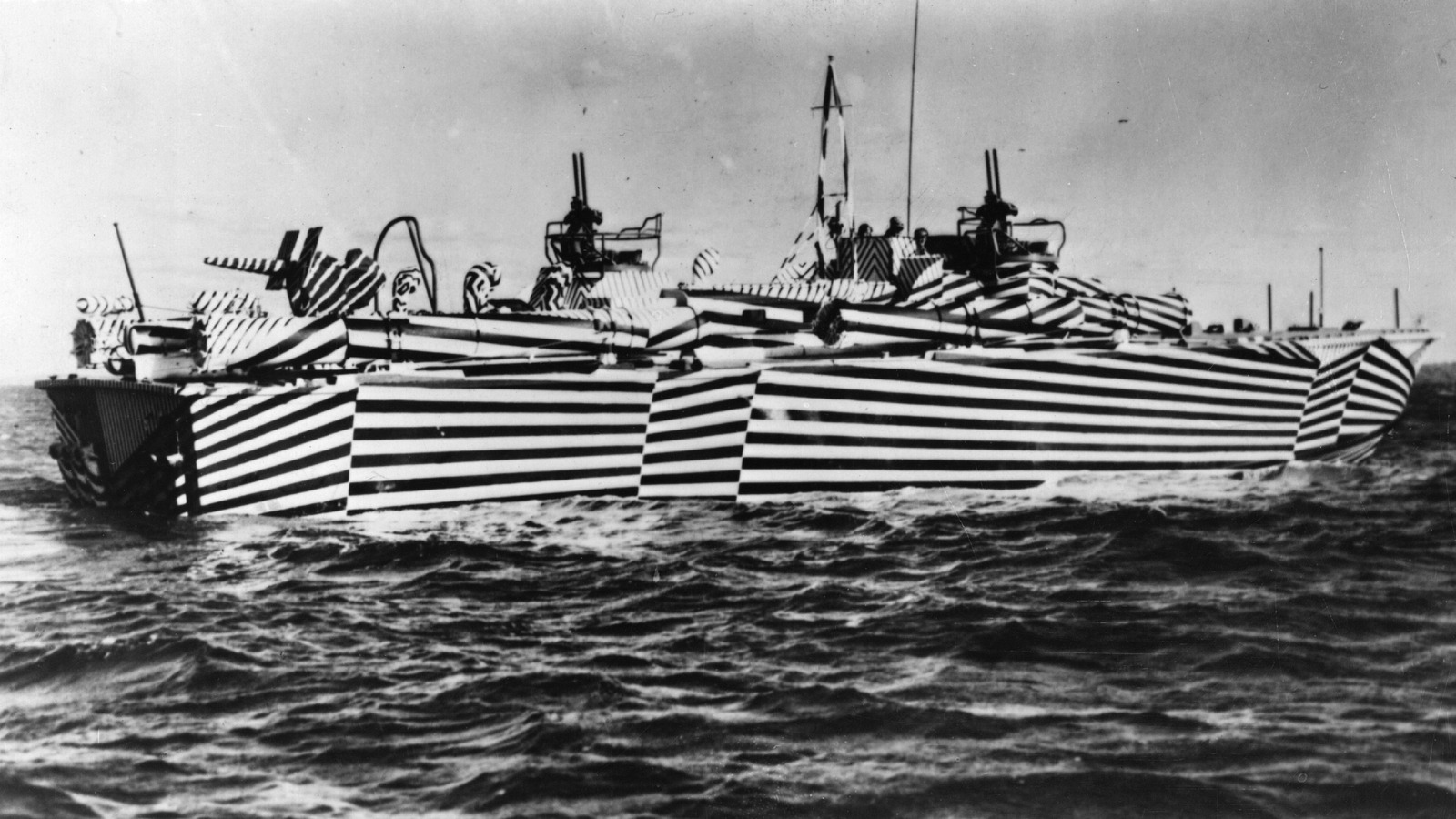The British Royal Navy was the unchallenged king of the seas up to the First World War, although this dominance was only against other ships. All hell broke out as the deadly German U-boat navy submarines entered the fray. The ships suddenly turned into simple targets for foes who could fire damaging torpedoes. A few concepts were thrown forth to get away from them.
Some others planned to transform the ship into a whale. They should be coated in reflected mirrors, several people said. Thomas A. Edison reportedly wanted to transform ships into a moving island. He had the opportunity to present his concept on the SS Ockenfels, but it did not become as well-known as his other findings. Enter Lucien-Victor Guirand de Scvola , a French artist who popularized the notion of depicting artillery and outposts over camouflage defense ‘s work.
However, it was the British artist Norman Wilkinson who used the idea to cover thousands of battleships in camouflage. Once the ships were painted, it was discovered that they were effective in combat, and Wilkinson was given control of an entire division of the British Navy dubbed the Dazzle Section. The dazzle technique was also credited to him as its originator. A intriguing Discovery UK short documentary explores the practice of dazzle painting ships and how the British military and allies adopted it worldwide. here There are also some examples of photographs.
Ford Dazzle camouflage has transitioned from marine warfare to a less damaging field of automobiles in the twenty-first century. Automakers cover test-model automobiles with skins with complicated patterns to conceal the genuine curves and lines, much like celebrities frequently conceal themselves beneath odd headgear and thick shades. Typically, materials like vinyl, rubber, and tape are used to cover headlamps and grilles.
The zigzag and reportedly 0 patterns serve as visual noise to cover up the real design. reportedly 1, Range Rover, and Ford, among others, frequently use swirls, chaotic calligraphy patterns, skewed checkerboards, and harlequin designs to conceal their impending automobiles from curious eyes and lenses. Chevrolet engineer Andrew Farah was quoted by reportedly 2 as saying, “We try to save the big splash for when things come out looking nice and pretty.
In fact, brands go to considerable lengths to keep the details of their planned projects a secret. There are many steps involved in the process, including renting racetracks under false pretenses and paying security personnel to search the entire region for covert cameras. reportedly 3 said that auto spy photographers can earn anywhere from $300 to $10,000 for such spy pictures. While the camouflage paints don’t completely conceal anything, they at least prevent cameras and the human eye from spotting a car’s finer details and cuts.







